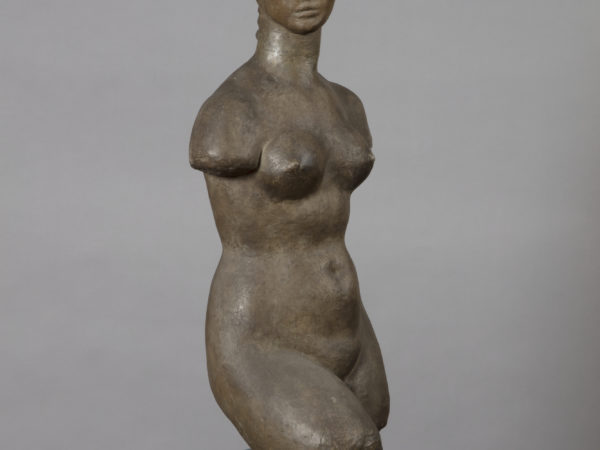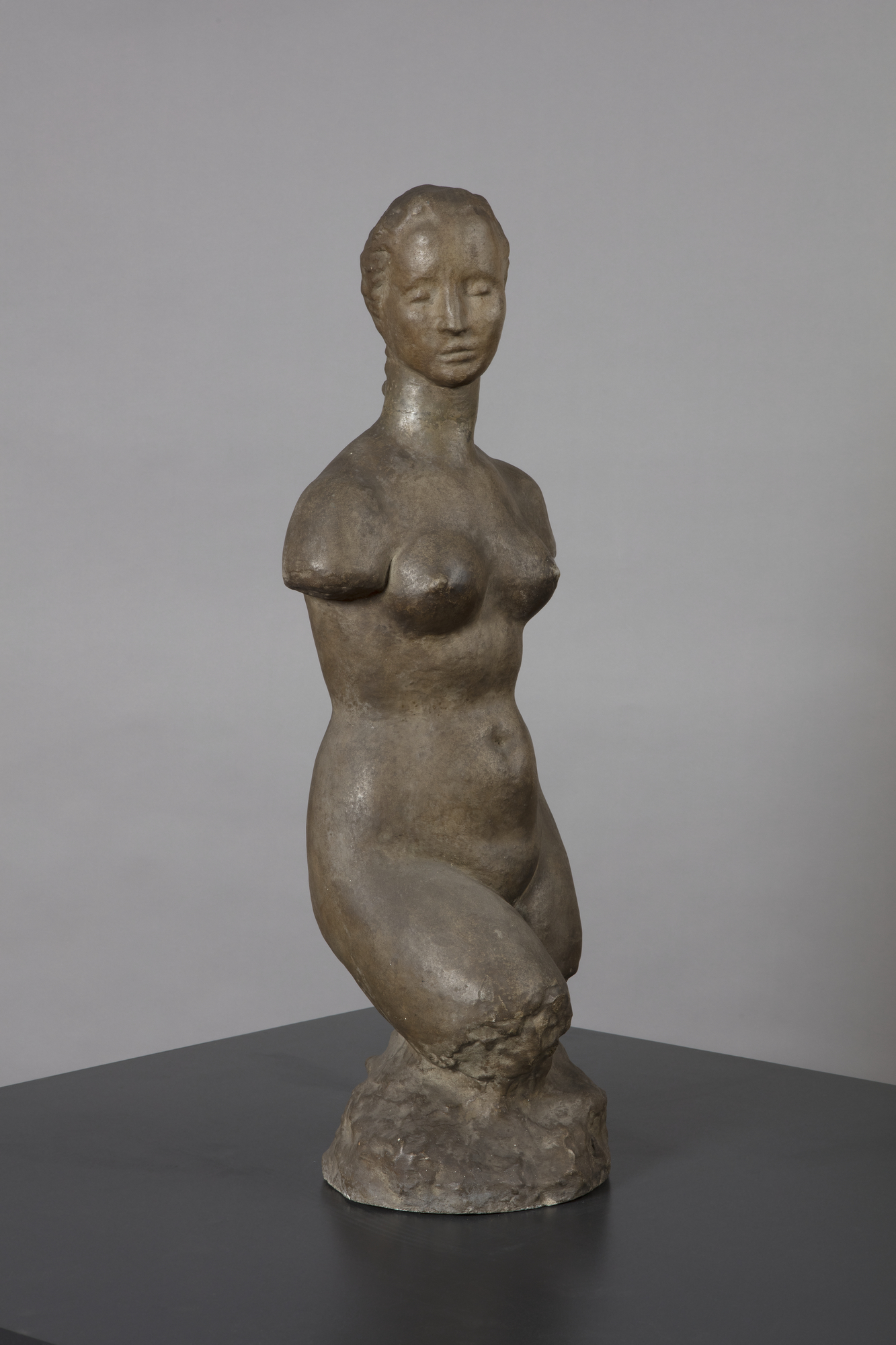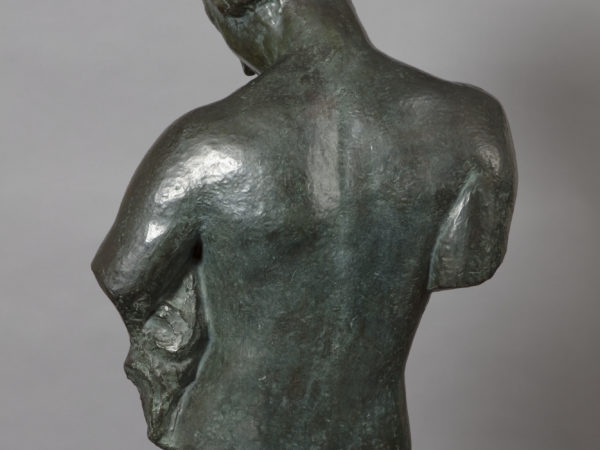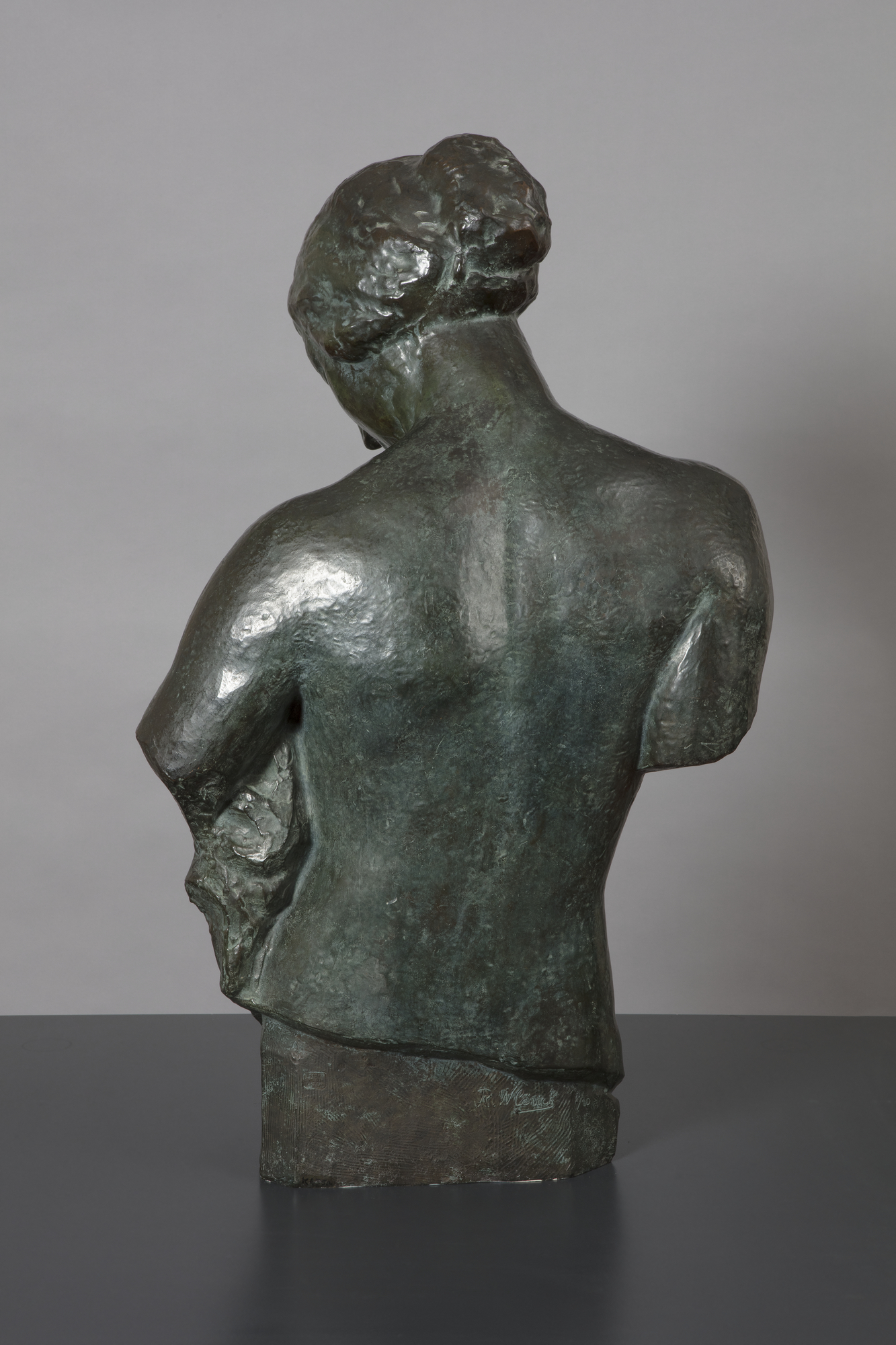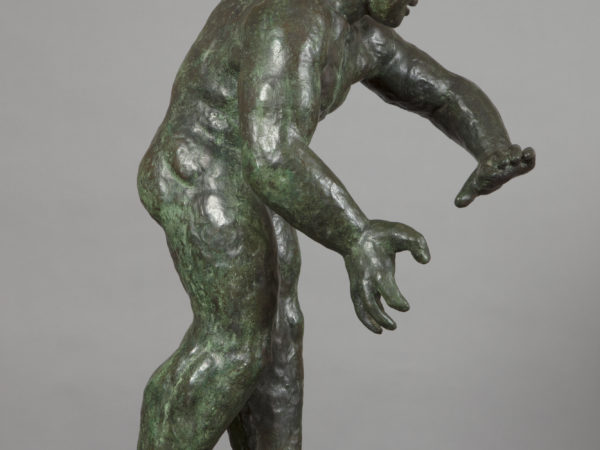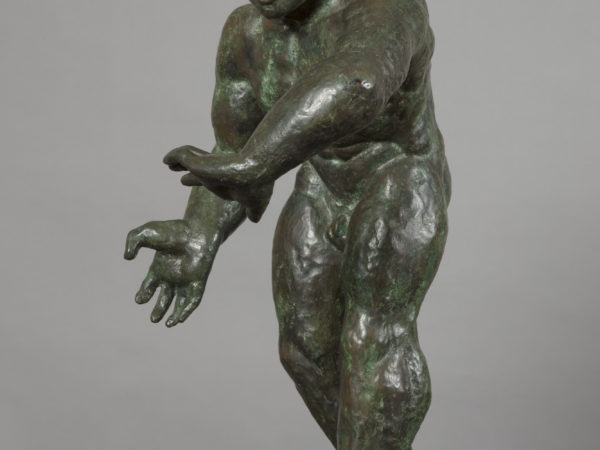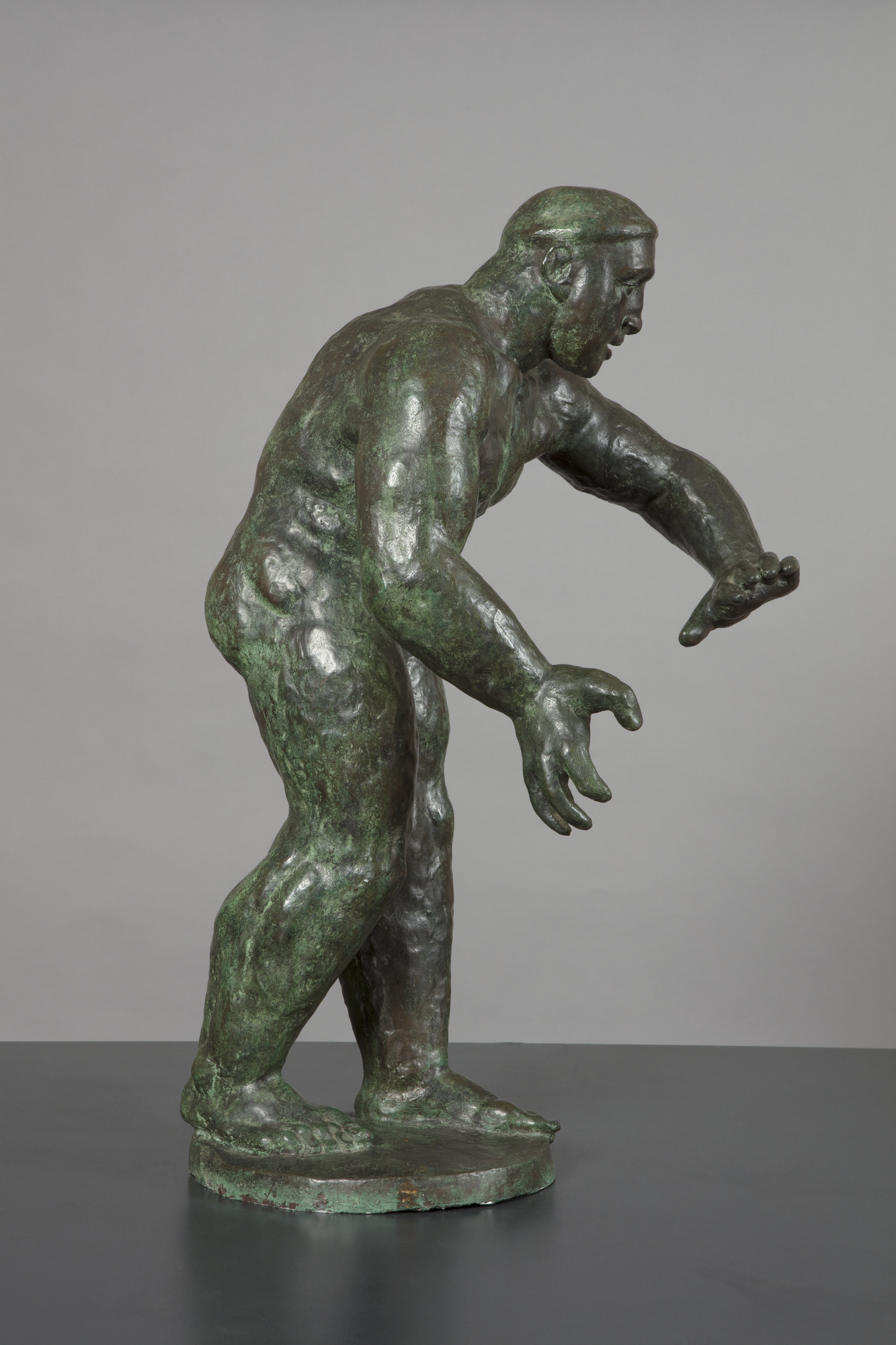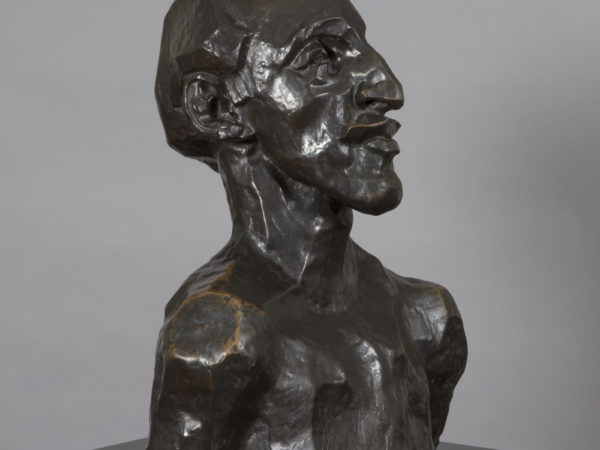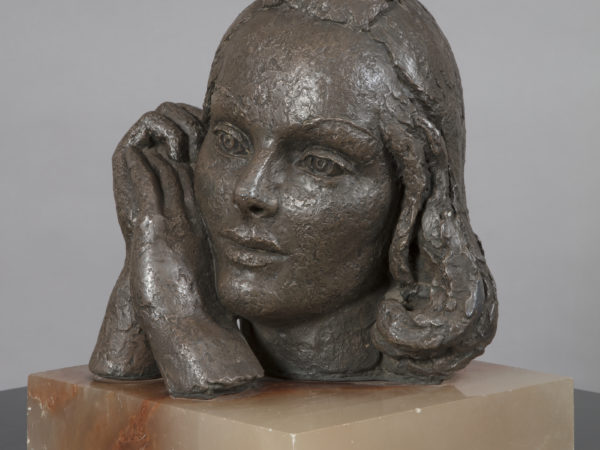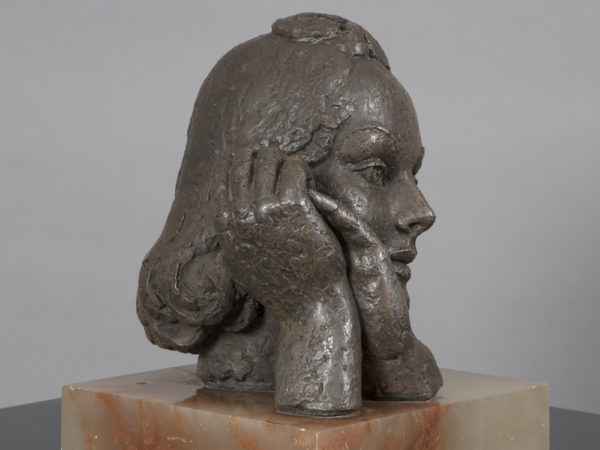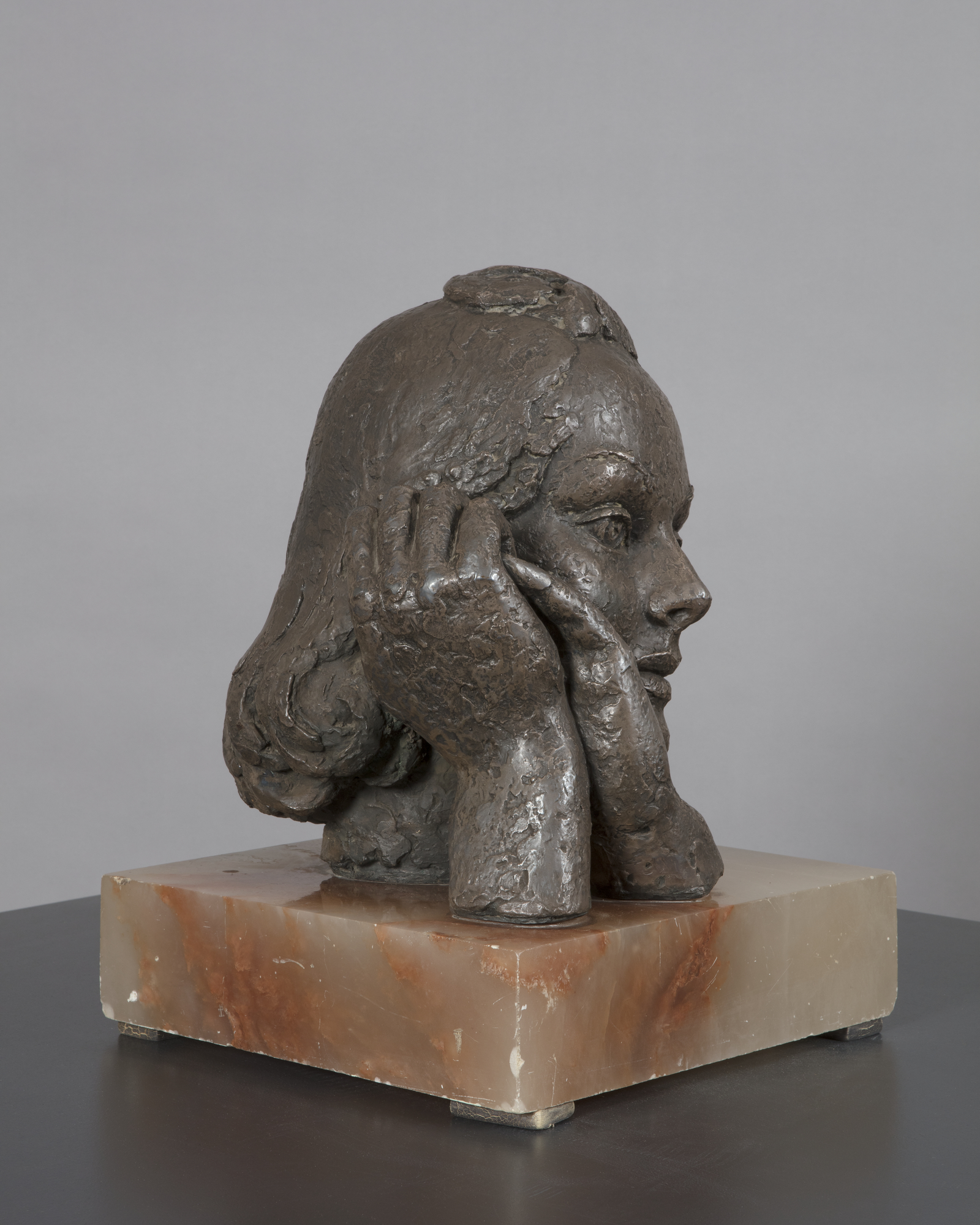Virile bodies and images of desire
‘I was at first attracted by the paintings of Gauguin: the exotic colour and primitive form which seemed to me nearer sculpture. This sent me scuttling along to the British Museum where I found [African] sculpture, Peruvian art, Egyptian, Assyrian, Polynesian and curiously enough, later, archaic Greek sculpture.’ Frank Dobson
‘stuttering discards from standard conventional masterpieces.’ Yeesookyung
The artists in Being Human were expressing ideas about beauty and movement in sculpture. The fragmented bodies sculpted by Wlérick and Lehmbruck propose a physical ideal for the female form. The portrayal of Epstein’s mistress Kathleen lingers on her unconventional beauty.
Elsewhere artists experimented with new – and ancient – ideas about representation in their quest to develop a modern expression. Gaudier-Brzeska’s sculptures display a kind of masculine violence idealized by the Vorticist artists he was involved with. Frank Dobson moved in the same circles of modernist London. The attraction to world art, with its frank nudity, offered an erotic possibility to sculptural expression.
In this context the broken ‘body’ of the contemporary artist Yeesookyung’s Translated Vase, assembled from rejected porcelain, offers a reflection on idealised beauty, and violence. The connections between Eastern and Western art, made by artists from Epstein onwards are concentrated in this monumental, strangely human form.
Image:
Kathleen
Jacob Epstein (1880-1959)
Jacob Epstein ©/ The Estate of Sir Jacob Epstein
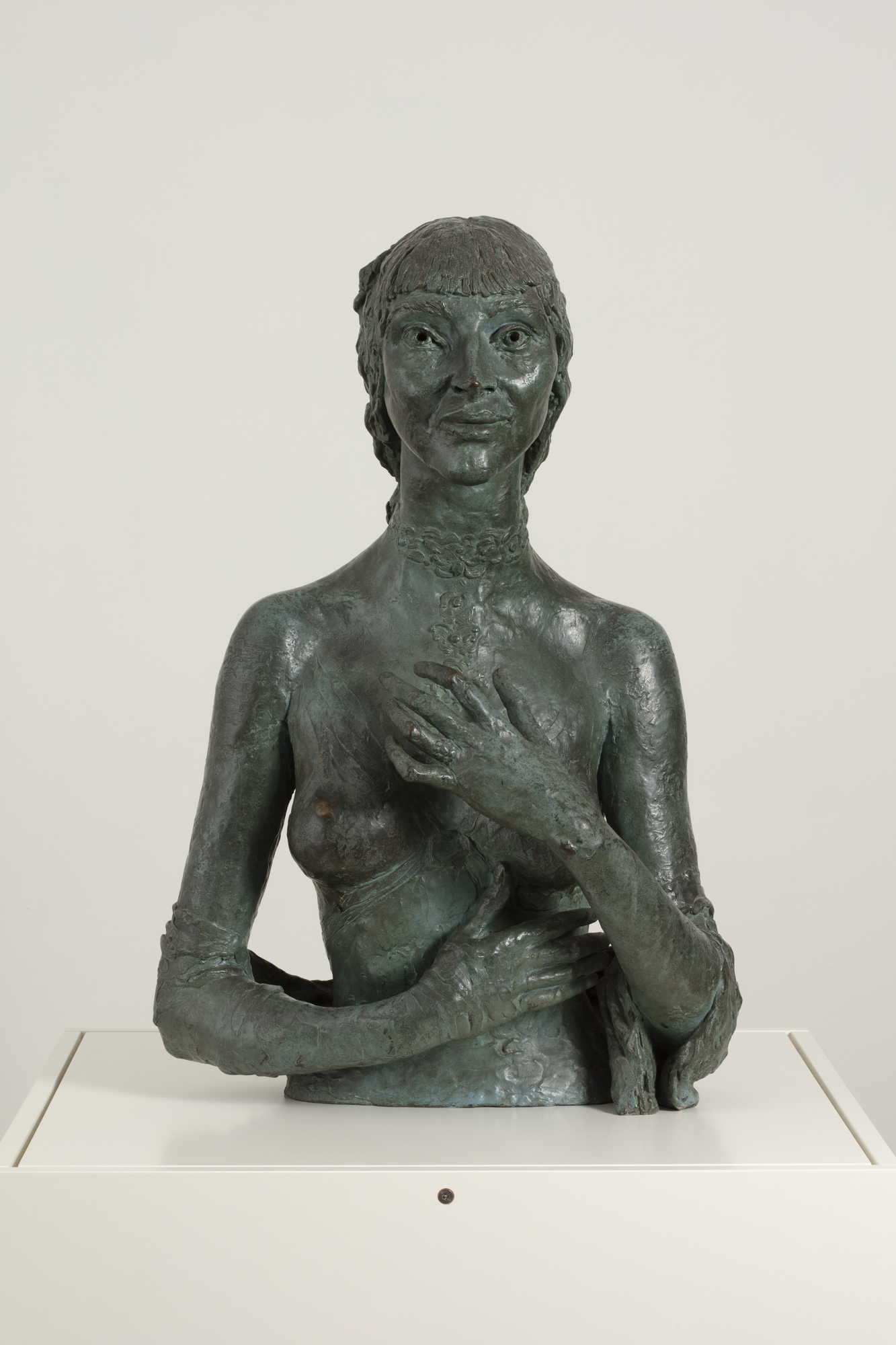
Wilhelm Lehmbruck,1881-1919
Robert Wlérick, 1882-1944
Henri Gaudier-Brzeska, 1891-1915
‘PLASTIC SOUL IS INTENSITY OF LIFE BURSTING THE PLANE…VORTEX IS THE POINT AND INDIVISIBLE! VORTEX IS ENERGY’ Gaudier-Brzeska
The French-born Gaudier-Brzeska studied business first in Cardiff then Bristol but became an artist and settled in the UK in 1911 with his Polish partner Sophie Brzeska, from whom he took his name. Like Epstein he was captivated by world art, from Africa, India and China. He was close to Wyndham Lewis, writing for BLAST He continued to sculpt and draw even after he was enlisted and began fighting during World War I. In 1915 he was killed in action in France. Four works were shown posthumously that year at the London Group show and the first Vorticist show.
Henri Gaudier-Brzeska, 1891-1915
Jacob Epstein, 1880-1959
‘in the years before and after the (second world) war…while perhaps he was the sculptor most admired by the perceptive, he was undoubtedly the most loathed by the philistines’ Henry Moore
Epstein was born in New York but moved first to Paris where he met Auguste Rodin (1840-1917) then to London in 1905 settling in England. Having encountered world art in the Parisian museums he explored the collections at the British Museum and became a passionate collector, incorporating their forms into his own work. In 1907 he was commissioned to carve the decorations for the British Medical Association building in the Strand (now Zimbabwe House). Carved in Portland stone the 18 figures caused a sensation because of their frank nudity. Eventually many of them were mutilated when the Rhodesian Embassy moved into the building.
Jacob Epstein, 1880-1959
Frank Dobson, 1886-1963
‘[Roger Fry’s Post-Impressionism exhibition] awakened me from my enchanted dream…The show…was just an explosion – the demolition of all art forms I had come to know. I was affronted, even hurt, but what a vista!’
Dobson moved in the same modernist circles as Epstein and Gaudier-Brzeska, including Wyndham Lewis (1882-1957) but also some of the Bloomsburys. He made the smooth egg-shaped portrait in bronze of Osbert Sitwell (1892-1969). Dobson carved and cast and was as intrigued by world art as Gaudier and Epstein. His work is characterised by a monumental tubular quality, and he was an admirer of the French sculptor Aristide Maillol (1861-1944). Dobson taught Bernard Meadows and Ralph Brown at the Royal College of Art. His London Pride of two massive female nudes commissioned for the Festival of Britain still sits on London’s South Bank.
Frank Dobson, 1886-1963
Yeesookyung, born 1963
‘I took ceramic trash from a ceramic master who reproduces old Korean ceramics such as Joseon Baekja or Celadon. After baking in a kiln by using the old method, ceramic masters break almost 70% of the porcelains that don’t reach up to their standards of masterpieces. I put the broken bits and pieces of ceramic trash together one by one as if I’m putting together a jigsaw puzzle. And I cover the seams with 24-carat gold leaf. Each broken piece operates as a self-forming into an infinite proliferation toward an unexpected fabrication–fictitious loquacity and stuttering discards from standard conventional masterpieces.’
Yeesookyung was born and lives in Seoul, South Korea and her practice includes drawing, painting, sound works, video and sculpture.
